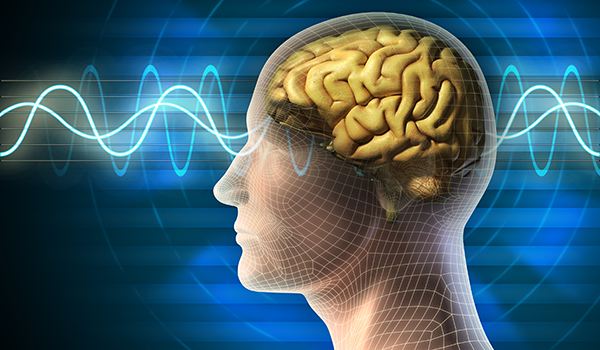April 13, 2023
The Enigmatic Gamma Waves

By Ram Rao, Ph.D., Principal Research Scientist for Apollo Health
Brain waves are electrochemical signals generated by neurons that are the basis for motor functions, thoughts, emotions, and behavior. Brain waves can be detected by placing sensors on the head and observing the changes in the pattern based on an individual’s behavior and dominant emotions. For example, slower brainwave patterns indicate that someone is tired, fatigued, sluggish, slow, or dreamy, while fast brainwave patterns correlate to alertness, fast-paced, and hyper-moody behavior. Among the various types of brain waves are gamma waves that oscillate anywhere from 30-100 Hz. Gamma waves are associated with higher-order cognitive functions and are known to decrease in the brains of people with Alzheimer’s.
The human brain constantly processes higher-order functions like thinking, remembering, analyzing, consolidating memories, focusing, attention, concentration, and more. During these activities, the neurons (brain cells) constantly communicate with each other via electrical signals. These signals produce electrochemical patterns or rhythms called brain waves. Brain waves can be measured using devices like electroencephalography (EEG) or magnetoencephalography (MEG), which involve attaching electrodes or sensors to the head for detecting the brain waves. The unit of measurement, which is cycles per second or Hertz, is based on the frequency or speed of the brain wave, which can be fast or slow. Fast brain waves indicate an active brain, typically observed when the individual is awake and alert. Similarly, brain waves have a slower pattern when the individual is sleepy, bored, or depressed.
Gamma brain waves, one such wave pattern created by the brain, have the highest frequency among all brain waves and are associated with high levels of functions like contemplation, thought, focus, and analysis. Gamma waves are also associated with cognition and memory. Some characteristic effects of gamma brain waves include:
1) Higher IQ, better focus and concentration
2) Better cognition and problem-solving ability
3) Faster information processing
4) Improved working memory
5) Increase in attention span, awareness, and mindfulness
6) Strengthens brain immunity and function
In contrast, low levels of gamma waves are associated with lower concentration, poor attention span, and poor learning and memory problems. In animal models of Alzheimer’s disease (AD), decreased gamma oscillation power is observed in various brain areas responsible for memory and learning. Spiking and synchronizing hippocampal gamma waves to 40 Hz, either through flashing lights or sound pulses, reduces the amyloid burden and activates microglia in animal models of AD. Thus, it appears that gamma stimulation may have therapeutic potential for AD and other neurodegenerative diseases.
A lag in gamma brain waves is also observed in patients with AD. Human clinical trials involving gamma wave stimulation through light, sound, or tactile stimuli in the 40 Hz range demonstrated reduced inflammation, increased microglia activity, increased blood flow to the brain, reduced amyloid beta and tau levels, and cognitive improvements in AD patients. While the precise molecular and cellular mechanisms by which gamma-band stimulation ameliorates AD pathology is unknown, researchers and clinicians advocate using various transcranial light and sound devices that stimulate gamma brain waves in the 40 to 80 Hz range to improve memory loss associated with AD.
Interestingly, in addition to light and sound devices, eating certain foods also stimulate gamma waves. Researchers have shown that eating leafy greens and nuts regularly stimulates and strengthens gamma waves and improves cognition, memory, and other key brain functions. Furthermore, other activities, including writing (see Julie G’s blog “If Spring Were a Poem”), reading, breathing exercises, and meditation, also stimulate gamma wave activity in the brain.
While gamma wave stimulation through various transcranial devices may appear to be a convenient and simple therapeutic tool to treat or reverse AD, remember that for sustained and optimal results, this technique needs to be integrated with other complementary strategies (See The Bredesen Seven) that allow the brain to heal, grow new neurons and synaptic connections, and be more resilient.




